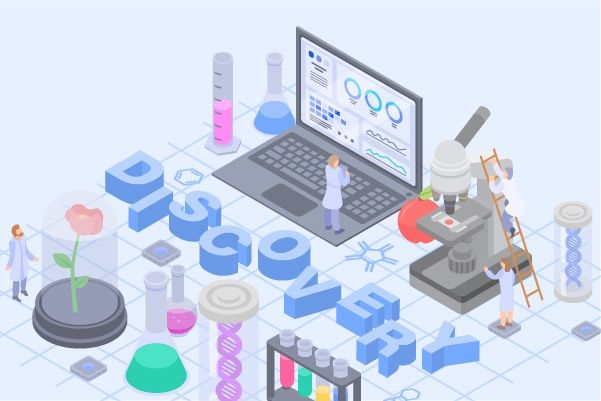How to Understand the Efficacy of New Drugs?
Q: What is a clinical trial?
Determining the effectiveness, safety, and marketability of a drug requires validation through clinical trials.
Clinical trials refer to any systematic research on drugs conducted on humans (patients or healthy volunteers), the goal being to assess the therapeutic and safety effects of the drug. If a drug is to be successfully brought to market, it must withstand three progressive rounds of clinical trials, namely phase I/II/III clinical trials. Once successfully marketed, a phase IV trial is further required.
Phase I Clinical Trials: The number of trial participants is small and there is no control group. The main aim is to test the human body's tolerance to the drug and the change in concentration of the drug after entering the body, providing a basis for the subsequent drug administration scheme. This phase also evaluates the safety of the drug. Hospitalization is required during the trial for close observation of participants' symptoms and signs.
Phase II Clinical Trials: The number of trial participants is relatively larger, ranging from several dozens to hundreds depending on the trial; some random control settings may be in the trial design, and some may not. The main purpose of this phase is to assess the effectiveness of the drug, determining the drug dosage and medication plans in preparation for the next phase of clinical trials.
Phase III Clinical Trials: When a drug demonstrates promising therapeutic effects in Phase II clinical trials, it will proceed to Phase III clinical trials, involving hundreds or even thousands of patients. The study design usually involves randomization, double-blinding, and control trials and is time-consuming, adopting a multi-national, multi-regional, multipoint clinical trial model. The main purpose here is to identify the target patient population for this drug and determine the optimal medication dosage plan according to different patient groups, providing ample evidence for the final drug registration application review.
Q: What are Randomization, Double-blind, and Control?
Randomization: The process of assigning subjects to different groups without any human influence so that no one can interfere.
Double-blind: Neither the patient nor the attending physician knows whether the patient is taking the experimental drug or a placebo or something else. Only a third-party statistical company is aware.
Control: One group uses the experimental drug, and the other group uses either a placebo or an existing first-line treatment drug.
Phase IV clinical trial: It is an applied research trial conducted after the drug is on the market, to broadly observe the patients' usage effects and adverse reactions, thereby corroborating previous research results.
Q: How can you understand the efficacy of a new drug?
The extent to which the disease can be treated and whether it can be effectively controlled after medication requires the understanding of the following terms in the article: Complete Response (CR), Partial Response (PR), Disease Progression (PD), Stable Disease (SD), and Objective Response Rate (ORR).
Complete Response (CR) is the most ideal outcome. It indicates that the lesion has completely disappeared after the patient uses this drug and can last for more than 4 weeks, which means there is a potential for clinical cure (Of course, the real cure is not so simple, only when clinical complete response lasts for more than 5 years, the doctor will responsibly declare a "cure"). Therefore, the higher this value, the better the therapeutic effect of the drug!
Partial Response (PR) is also a good result, indicating that the lesion has reduced by at least 30% compared with before, and this can last more than 4 weeks. Similarly, the higher this number, the better the therapeutic effect of the drug!
Objective Response Rate (ORR) is the sum of CR and PR, calculating the final proportion of ideal and acceptable results, which is usually a major efficacy evaluation index in Phase II clinical trials.
Progression Disease(PD) refers to the total of all lesions in the patient's body, which has increased by at least 20% after using the drug compared to before, or new lesions have appeared in the process, implying that the therapeutic effect of the drug is not good. Therefore, the lower this value, the better.
Stable Disease (SD) is a midpoint between Partial Response and Disease Progression, indicating that the changes in the size and number of lesions are in between.
Q: Which indicators can evaluate the long-term therapeutic effect of a drug?
Overall survival (OS) is essentially the time from a patient's entry into a study until their eventual death. The goal of treatment is survival, making this the globally recognized primary endpoint for evaluating the efficacy of anti-tumor drugs. A significant improvement in the overall survival of a drug or treatment method translates to genuine benefit for the patient. It's worth noting that this value uses the median - that is, the middle value when all patient OS values are arranged from smallest to biggest.
Progression-free survival (PFS) refers to the time from a patient's entry into a study until the first recurrence/metastasis of the tumor, so this time is shorter than the above OS. Importantly, the term "progression-free" should not be interpreted as "stagnating," but rather as the effective control of the disease, representing a positive, ideal state. Therefore, the longer this period, the better the treatment's efficacy. Like the OS, the usual value taken for this measure is also the median.
The 5-year survival rate is a critical benchmark for any type of tumor. Ample research confirms that the high peak of recurrence/metastasis occurs within the first year following treatment for cancer patients, followed by within 1-3 years. The risk of recurrence/metastasis within 5 years accounts for over 90%1. Once the initial 5 years have been safely navigated, it signifies the successful conquering of cancer. Therefore, the 5-year survival rate is a crucial reference for treatment efficacy.
Q: How to evaluate the safety of a drug?
The evaluation of safety is based on the incidence of adverse events.
In addition to being effective, a drug also needs to have good drug use safety. This indicator is mainly based on adverse events (AE).
Adverse events (AE) are negative medical events that occur during treatment. After ruling out other causes and confirming the relationship with the drug, they will be regarded as adverse reactions of the drug. Among them, some are mild and do not require treatment, some are more serious, affecting the patient's daily life or prolonging hospitalization time, and some can cause disability or death.




